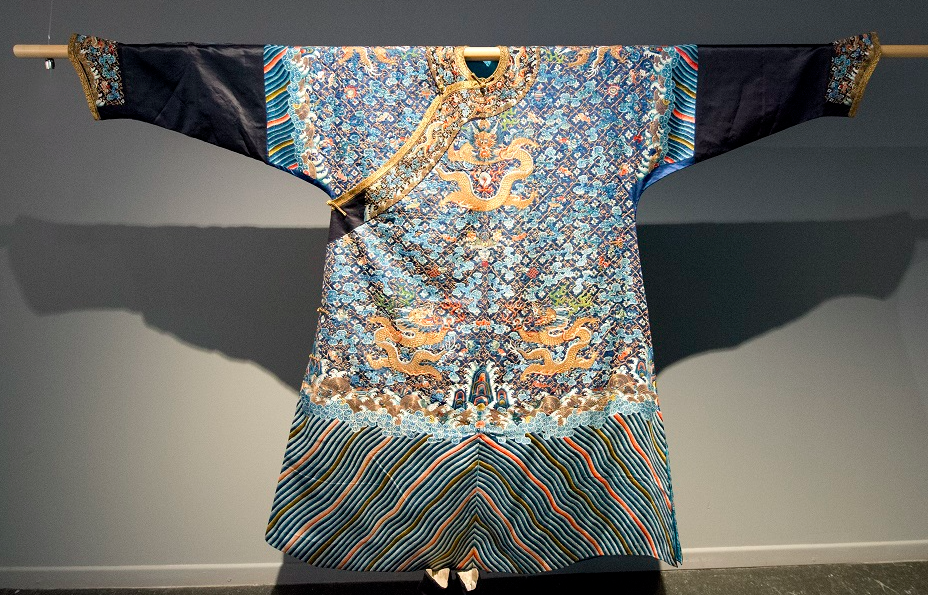The late Qing Belgian diplomat
A large, wealthy Belgian industrialist with his own castle, mayor of a city, passionate collector of Chinese art, Raoul Warocqué (1870-1917) led the last diplomatic mission to Imperial China in 1910! He had been received by Emperor Guangxu’s brother, the Prince of Chun, a year before the end of this last imperial dynasty of China! Another very Belgian surrealist story!
Raoul Warocqué, socialist billionaire
He was the last of the Warocqué dynasty, these great coal bosses who made their fortune in the Belgian mines from the beginning of the 19th century. He had done 4 years of law at the Free University of Brussels, but without much conviction. He had a presentiment of being called to something else and knew that he would inherit a considerable sum when he came of age (his father died when he was 10 years old). Getting back to business, yes, but being a progressive liberal at heart, tasks awaited him and he was ready.
Thus, having become a deputy, all his bills were in favor of the working class. Himself making it a point of honor to promote the working conditions of miners in his coal mines. Alongside the generous subsidies he granted, among others, to the International Exhibitions of Brussels and Charleroi. He financed heating rooms, crèches, orphanages, maternity hospitals, day and evening schools and a number of charities throughout his life.
Why ? And why not ? could he have retorted.
His business was doing tremendously well, his investments too and he, he said, had received everything at birth. Not false, but this extraordinary charisma still amazes today. Monsieur Raoul, as his servants called him, was, after the royal family, the richest man in Belgium. His follies consisted most of the time in almost compulsive purchases: old books, archaeology, Far Eastern arts, “chinoiseries” as they said then for porcelain, jade, cloisonné enamels, bronzes… But there was an enormous expense between all, June 28, 1903.
A memorable banquet
Raoul W. had enlarged his domain of Marieront by adding the land that surrounded the ruins of the castle of Charles de Lorraine (18th) Very beautiful ruins, a fabulous space but to be covered because “open to the sky”. It was therefore under the tent that the banquet of 3000 people took place in honor of the future King of the Belgians, Prince Albert. It was talked about for a long time in the surrounding cottages!
An avant-garde institute with Chinese lessons!
Raoul Warocqué was visionary in some respects when he founded the Commercial Institute of Industries in Mons in 1899: during the last two years of study, Chinese was learned there; on the other hand, a reception was reserved for Chinese students who came to learn our language before undertaking the desired training. What was it if not to promote the expansion of Belgian technologies towards the Middle Empire?
In 1910, when he was appointed to lead the Belgian diplomatic mission in the Far East, Belgium had already proven itself in the mining industry and the Chinese railways: everyone was going to be able to discover the 1214 km line linking Beijing to Hankou as well as the 3km bridge spanning the Yellow River!
His great trip to ending imperial China
On April 6, at 11 p.m., boarding the Transiberian bound for Vladivostok to Harbin and then from train to train, on April 18, it is the arrival in Beijing in the Belgian Legation, a Flemish Renaissance style castle ( !) and first reception. Sightseeing including the Temple of Heaven. On April 21, imperial audience, well almost, since it is the regent, Prince Chun, brother of the late Emperor Guangxu who will receive them.
It is installed in uncomfortable sedan chairs that Messrs Warocqué and de Prelle de la Nieppe enter the Forbidden City. The session is ceremonial in all respects, with presentation of credentials and speeches relating to the death of Leopold ll and the accession of Albert 1st. Small European snack with champagne in the library. Mission accomplished and telegram to King Albert 1st to inform him. The tourist program that follows includes the Summer Palace which amazes the Belgian delegation and the Great Wall which… persuades it of its insignificance even if it can put the construction of the central Chinese railway axis to its credit. Little perfidy not even disguised, quite peculiar to Chinese humour.
From Beijing to Shanghai via Guangzhou
It goes without saying that the visit of Belgian interests in China is on the program. Lincheng coal mines (Raoul Warocqué is one of the main directors of the company), Hanyang metallurgical plants, etc. And ceremonial receptions, dinners and many other visits including, for Mr. Raoul, that of the antique dealers!
Chinese newspapers claimed that a Belgian had spent 80,000 gold francs there. It is also said that monks hiding “we don’t know what” rushed into the Belgian Legation to sell them…but this may be pure slander. The magazine Pourquoi Pas evoked this great mission in its edition of September 29, 1910. Raoul Warocqué is caricatured on the cover: dressed as a Mandarin, he enjoys a bowl of noodles!
On May 7, 1910, the Belgian delegation continued its journey and embarked for Nagasaki,
The most beautiful collection of Chinese art in Belgium !
For Raoul Warocqué, the continuation of this great adventure will be hundreds of boxes that will accumulate, some two tons of furniture, sometimes monumental works of art, precious fabrics… Enough to delight a art lover. And afterwards, that of all the visitors who come to discover them in the marvelous domain of Mariemont.
Died without heir in his mansion on the avenue des Arts on May 28, 1917, this exceptional man bequeathed his marvelous estate and all his collections to the Belgian State. So that everyone without distinction can access it. And take an interest, if necessary, in present-day China by discovering the one that sleeps for eternity within the walls of the museum.



